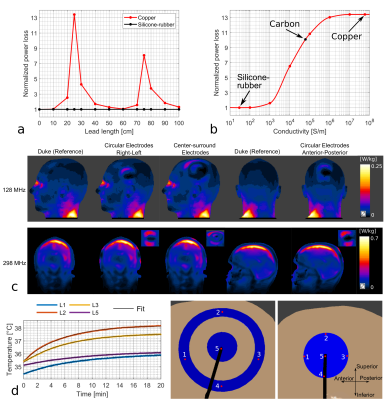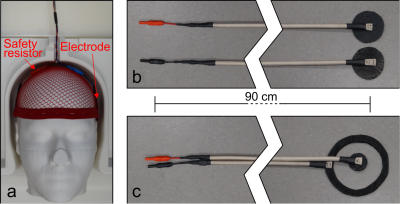Fróði Gregersen1,2,3,4, Cihan Göksu2,5, Gregor Schaefers6,7, Rong Xue4,8,9, Axel Thielscher1,2, and Lars Hanson1,2
1Section for Magnetic Resonance, DTU Health Tech, Technical University of Denmark, Kgs Lyngby, Denmark, 2Danish Research Centre for Magnetic Resonance, Centre for Functional and Diagnostic Imaging and Research, Copenhagen University Hospital, Amager and Hvidovre, Denmark, 3Sino-Danish Center for Education and Research, Aarhus, Denmark, 4University of Chinese Academic of Sciences, Beijing, China, 5High-Field Magnetic Resonance Center, Max-Planck-Institute for Biological Cybernetic, Tübingen, Germany, 6MRI-STaR-Magnetic Resonance Institute for Safety, Technology and Research GmbH, Gelsenkirchen, Germany, 7MR:comp GmbH, MR Safety Testing Laboratory, Gelsenkirchen, Germany, 8State Key Laboratory of Brain and Cognitive Science, Beijing MRI Center for Brain Research, Institute of Biophysics, Chinese Academy of Sciences, Beijing, China, 9Beijing Institute for Brain Disorders, Beijing, China
1Section for Magnetic Resonance, DTU Health Tech, Technical University of Denmark, Kgs Lyngby, Denmark, 2Danish Research Centre for Magnetic Resonance, Centre for Functional and Diagnostic Imaging and Research, Copenhagen University Hospital, Amager and Hvidovre, Denmark, 3Sino-Danish Center for Education and Research, Aarhus, Denmark, 4University of Chinese Academic of Sciences, Beijing, China, 5High-Field Magnetic Resonance Center, Max-Planck-Institute for Biological Cybernetic, Tübingen, Germany, 6MRI-STaR-Magnetic Resonance Institute for Safety, Technology and Research GmbH, Gelsenkirchen, Germany, 7MR:comp GmbH, MR Safety Testing Laboratory, Gelsenkirchen, Germany, 8State Key Laboratory of Brain and Cognitive Science, Beijing MRI Center for Brain Research, Institute of Biophysics, Chinese Academy of Sciences, Beijing, China, 9Beijing Institute for Brain Disorders, Beijing, China
Using low-conductive
silicone-rubber as TES leads inside the MR scanner reduces safety issues by
eliminating the ‘antenna effect’. This allows for higher stimulation currents
and lead configurations optimal for MRCDI.

Figure 3: a)
Power loss on electrodes vs lead length for antenna effect simulations seen in
Figure 2a for copper and silicone-rubber, respectively. b) Power loss on
electrodes vs conductivity at worst-case lead length. c) 1 g
average local head SAR for simulations at
128 MHz (top) and 298 MHz (bottom). d) Temperature measurement for
center-surround electrodes with center leads (Figure 3c). L in the legend
indicates that it is a
measurement on the left electrode. The numbers on the electrodes indicate the
probe position referred to in table 2.

Figure 1: a) Commercially available TES/MRI setup with copper
leads and 5 kΩ safety resistors. Leading the wires through the opening in the
coil and using twisted pair cables restricts the lead configuration and causes
stray fields compromising MRCDI experiments. b) and c) show the proposed
electrodes and the lead design.
Low-conductivity silicone-rubber is used for electrodes and leads thermally and
electrically shielded with a glass fiber sleeving. Medical grade touch-proof MC
connectors are used to connect the electrodes to copper lead wires 90 cm away
from the subject's head.
